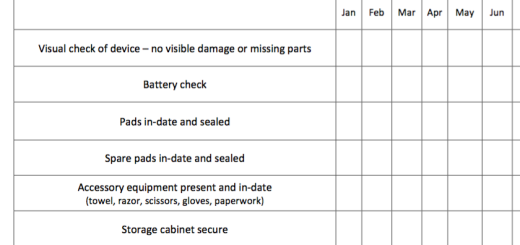Common eye conditions for first aiders and first responders
First aiders and first responders may encounter patients with a variety of different eye conditions. In this blog post we’ll discuss some of the most common eye conditions and what causes them.
Cataracts
Cataracts usually develop gradually and without pain as the lens in the eye loses transparency and the lens material yellows. They are the leading cause of visual disability in people over 65, although they can occur in young adults and children. Also, anyone who has diabetes or has suffered from an eye trauma early in life is at a higher risk of developing cataracts at a younger age.
Cataracts result in a gradual loss of brightness and a slight skewing of color perception, usually going unnoticed. Cataract removal is elective surgery, which means it is the patient’s choice when to undergo this surgical procedure. During this procedure, the clouded lens is surgically removed and replaced with an implant. To this date, surgery is the only effective way to treat this disease.
Glaucoma
Glaucoma occurs when there is too much fluid pressure in the eye, causing eye damage and potential blindness. Even though glaucoma is the leading cause of blindness in the United States, it can be easily prevented if the disease is detected in time.
The only reliable method of detecting glaucoma is by ophthalmoscopy, which allows the doctor to examine the optic nerve. Tonometry, or the “puff” of air, is also an effective test for glaucoma. Both of these tests can be conducted during office eye exams.
Presbyopia
Presbyopia is the gradual decline in the ability to focus on close objects or to see small print. It is considered to be a normal part of the aging process. Most people develop presbyopia around the age of 40, and using your eyes does not make the problem worse.
Symptoms include straining to read newsprint, or holding it at arms length, confusing similar numbers, and difficulty focusing on price tags or the time on a wristwatch. It is easily treatable with reading glasses or one of the vast arrays of specialty focal lenses. Exercising your eye muscles and proper nutrition can also play a role in delaying the onset of presbyopia.
Ocular Hypertension
Ocular Hypertension is not the same as glaucoma, which is typified by increased pressure within the eye, which in many cases can affect vision and ultimately cause blindness. It mainly affects individuals over the age of 40, African-Americans, and those with a family history of the disease, although individuals with nearsightedness or diabetes can be affected also.
Ocular Hypertension has no obvious symptoms, and there is no change in vision. It is also painless, and can only be detected through an eye exam. A tonometer test, or “puff” of air, is used to read internal eye pressure. Unfortunately, there is no cure.
Diabetic Retinopathy
At least one-half of everyone affected with Type I or Type II diabetes will develop Diabetic Retinopathy, which leads to visual impairment and even blindness. There are no warning symptoms, no pain, and no change in vision, although there will eventually be blurred vision, due to leakage of the blood vessels. It can only be detected during an eye exam with an ophthalmoscopy. There is no cure, only treatment with laser surgery. The best prevention is early detection.
Floaters
Tiny spots or flecks that float across the field of vision, “floaters” are usually harmless. In some situations though, they can be an early warning of certain eye problems- especially if there is a sudden change.
Dry Eye
This problem occurs when tear glands produce too few tears and cause itching, burning, or even reduced vision. Doctors often prescribe “artificial tears” to correct this problem.
Astigmatism
Astigmatism is an additional curvature on the surface of the cornea, or lens of the eye, that makes it difficult to focus. Slight degrees are apt to cause headaches, fatigue and poor schoolwork. More serious degrees produce blurred vision at all distances.
Retinal Detachment
A retinal detachment is a separation of the retina from the back wall of the eye. When there is a tear of the retina, liquid from the vitreous may pass through the tear, and detach the retina. As the fluid accumulates, the retinal detachment becomes larger. Detached areas of the retina lose their vision, and may not get it back. It typically occurs in nearsighted people, those over 50, those with significant eye injuries, and those with a family history of retinal detachments. It is repaired through surgery.





